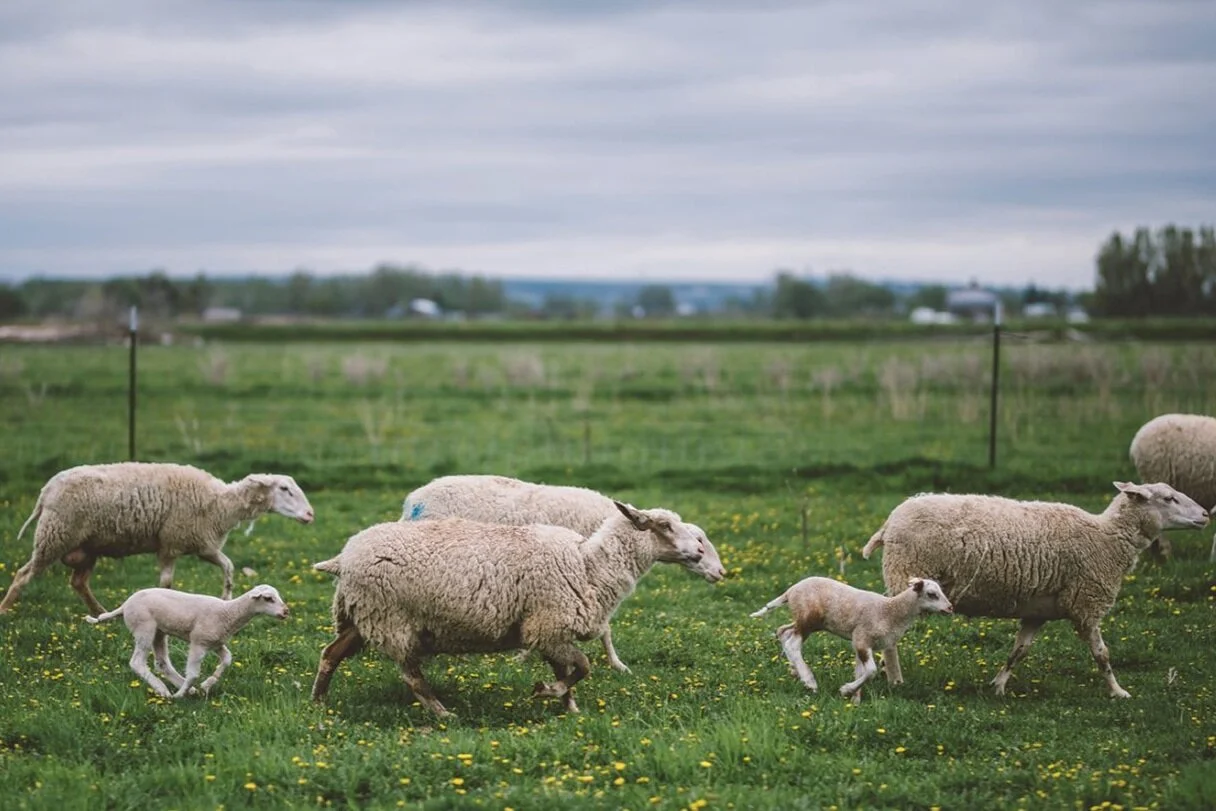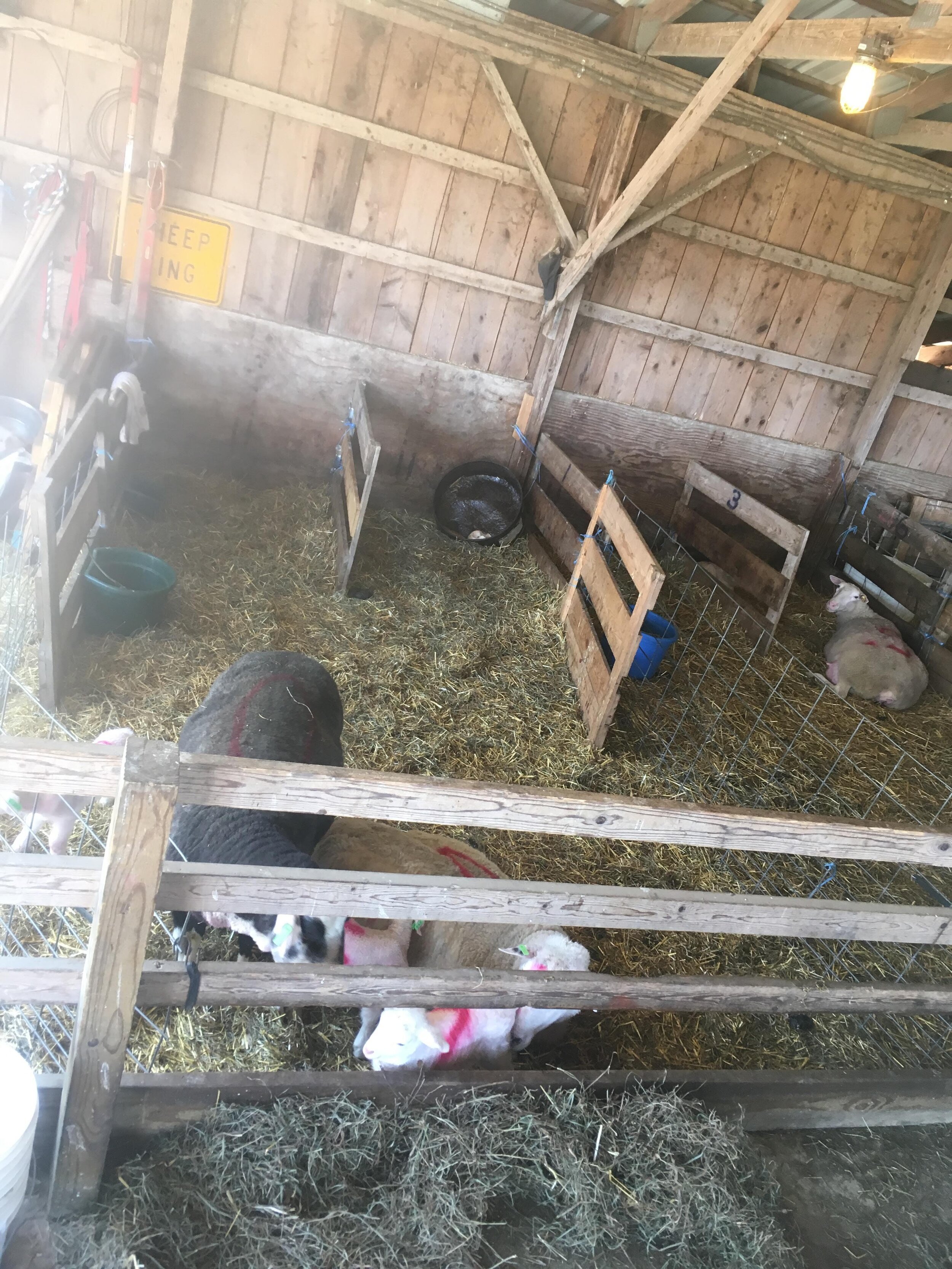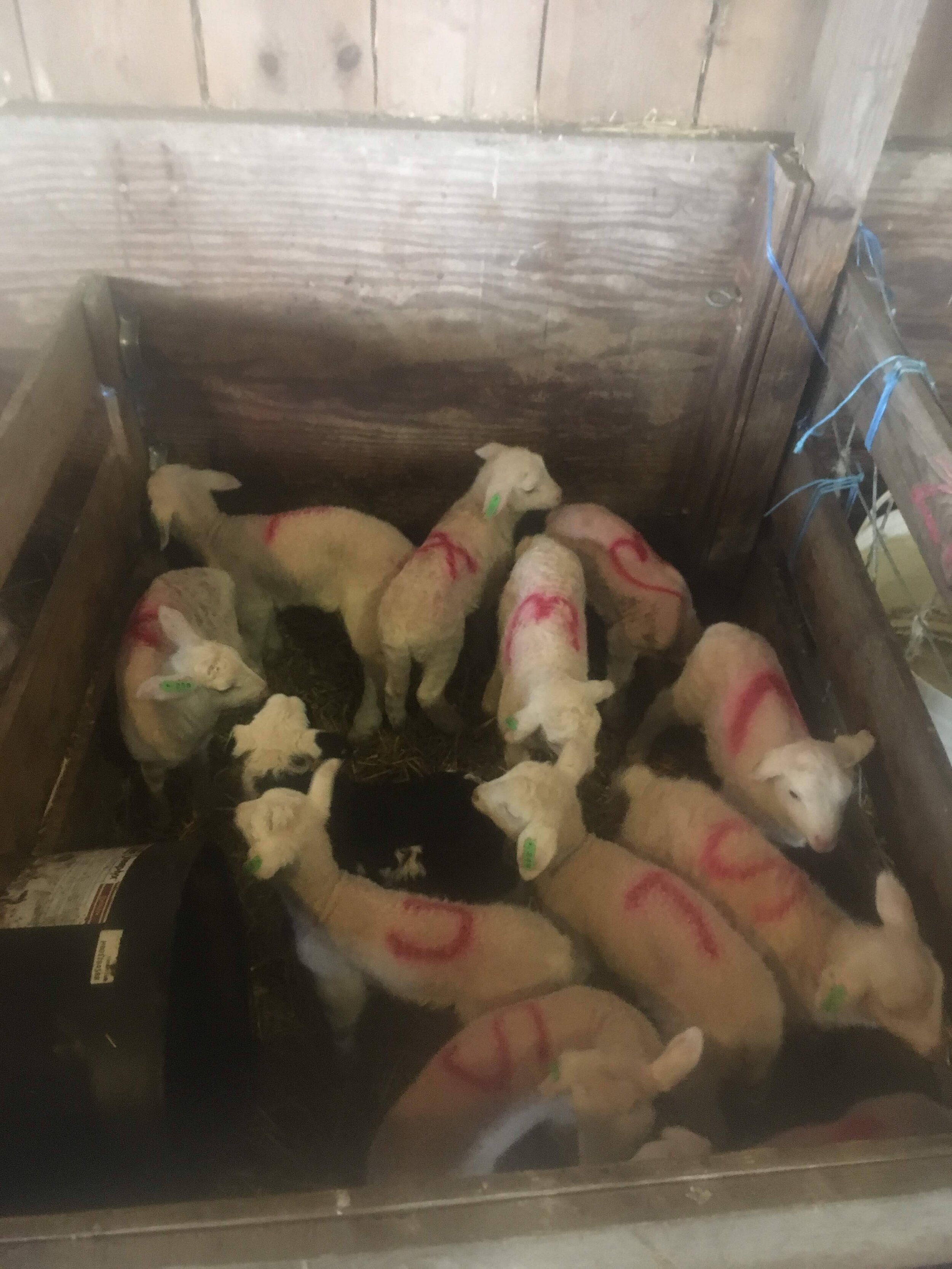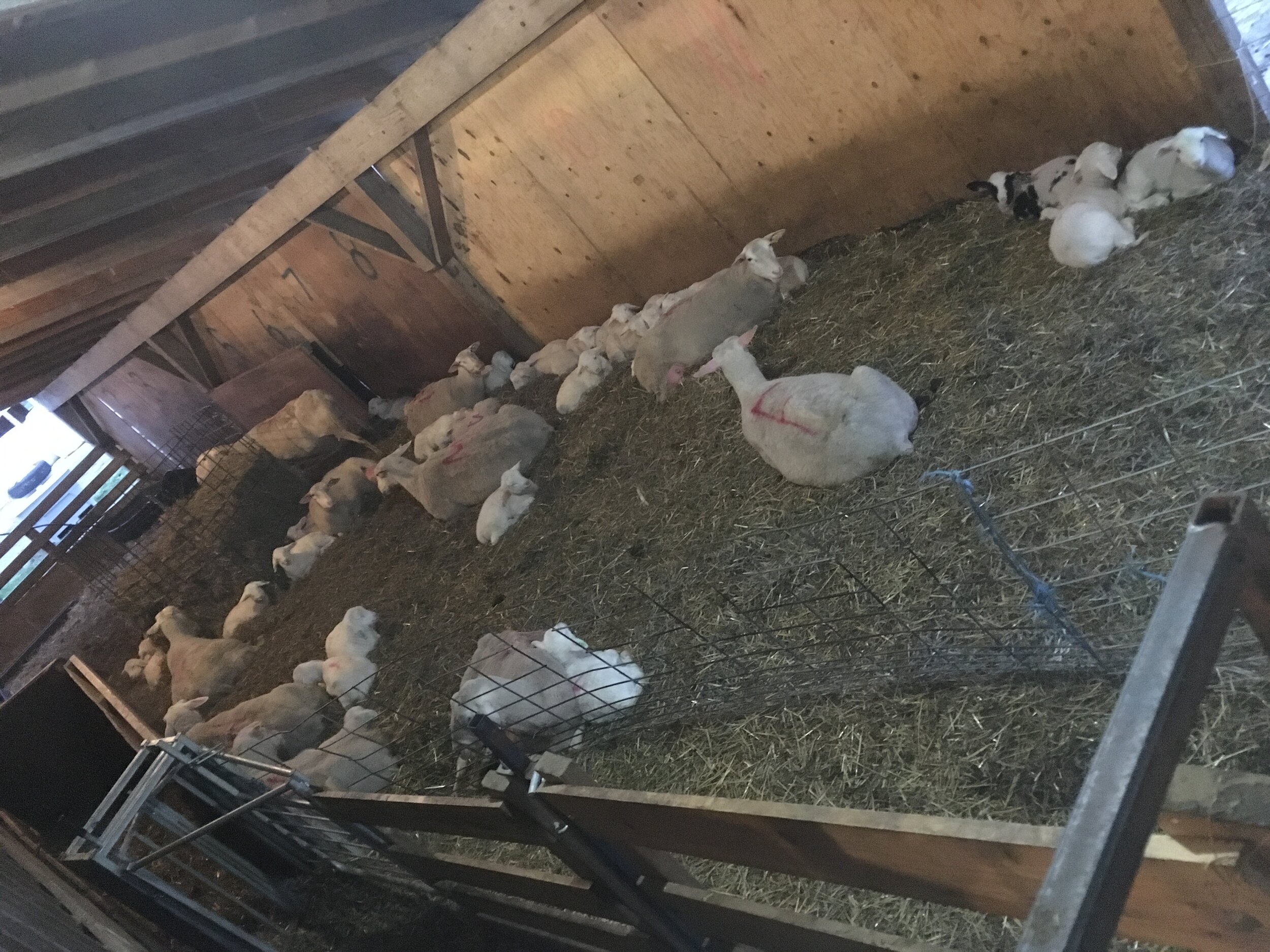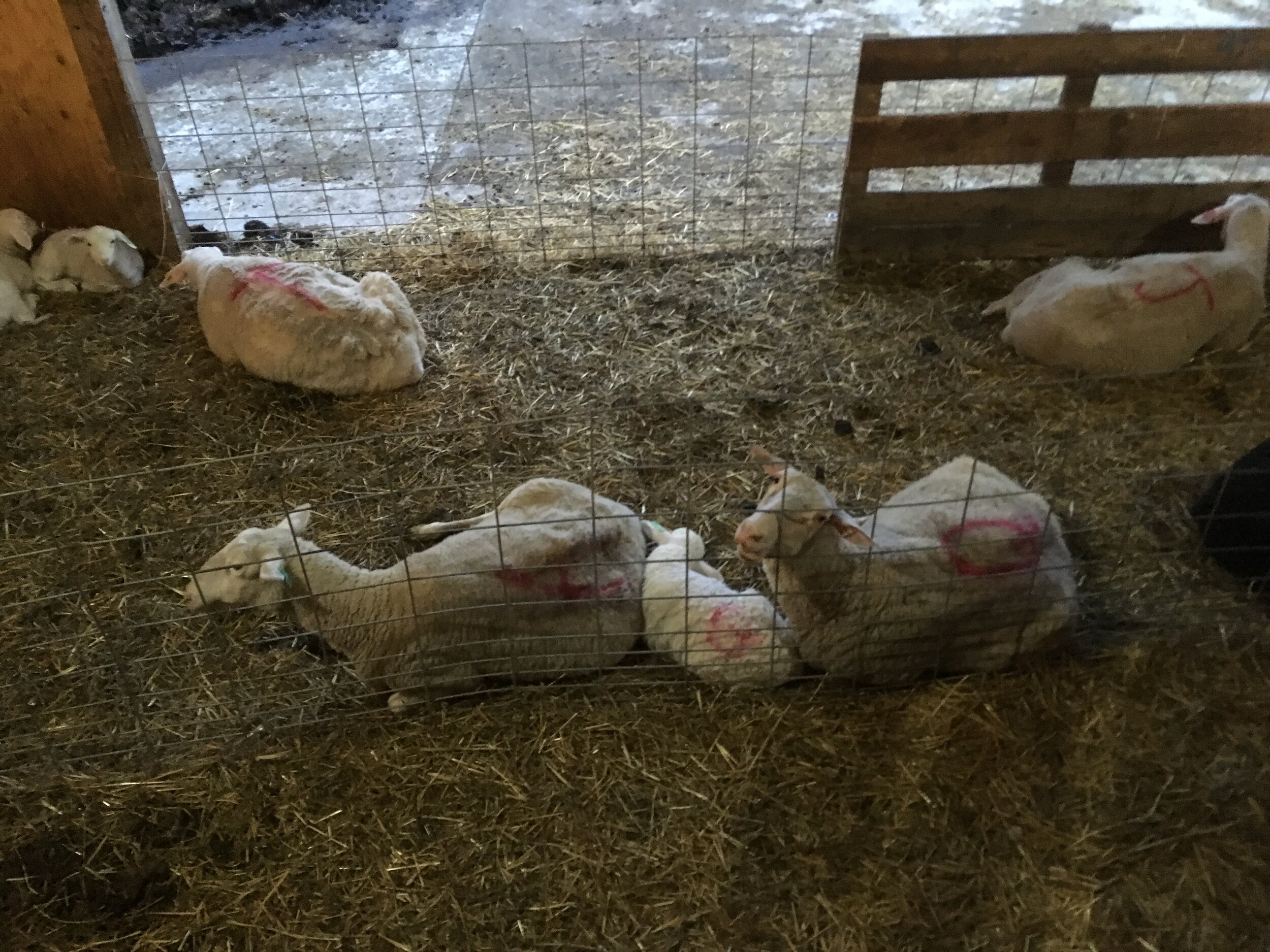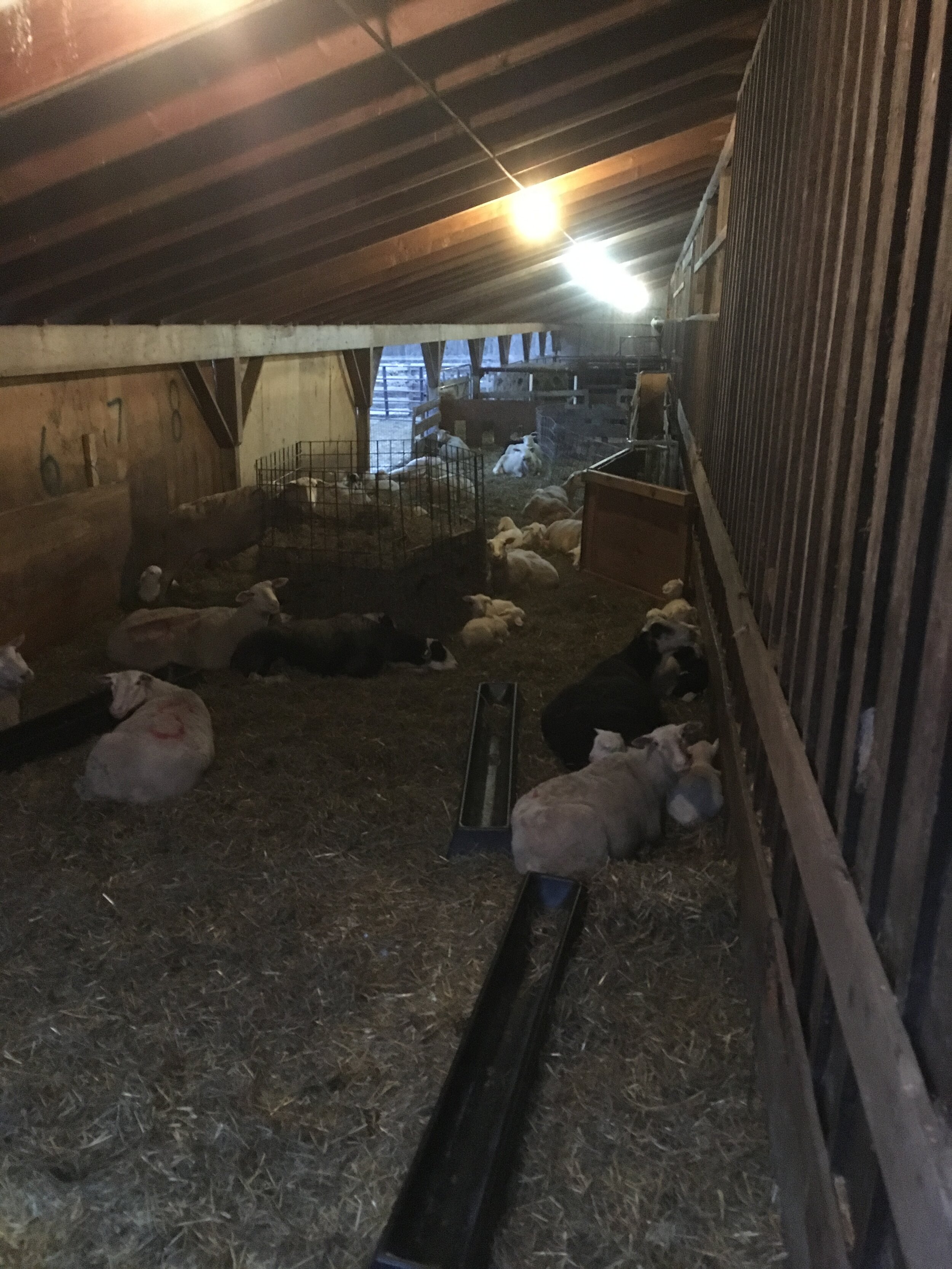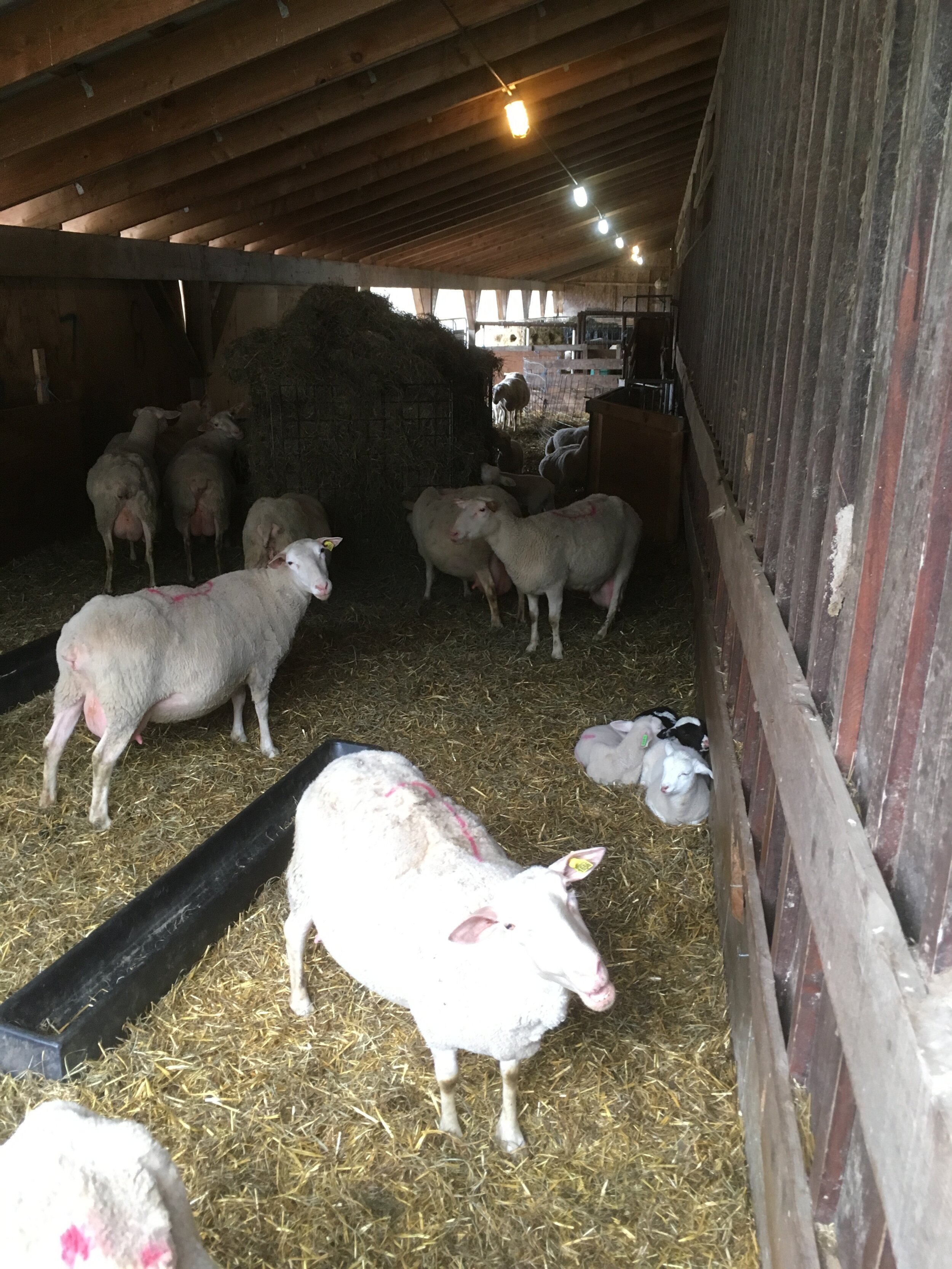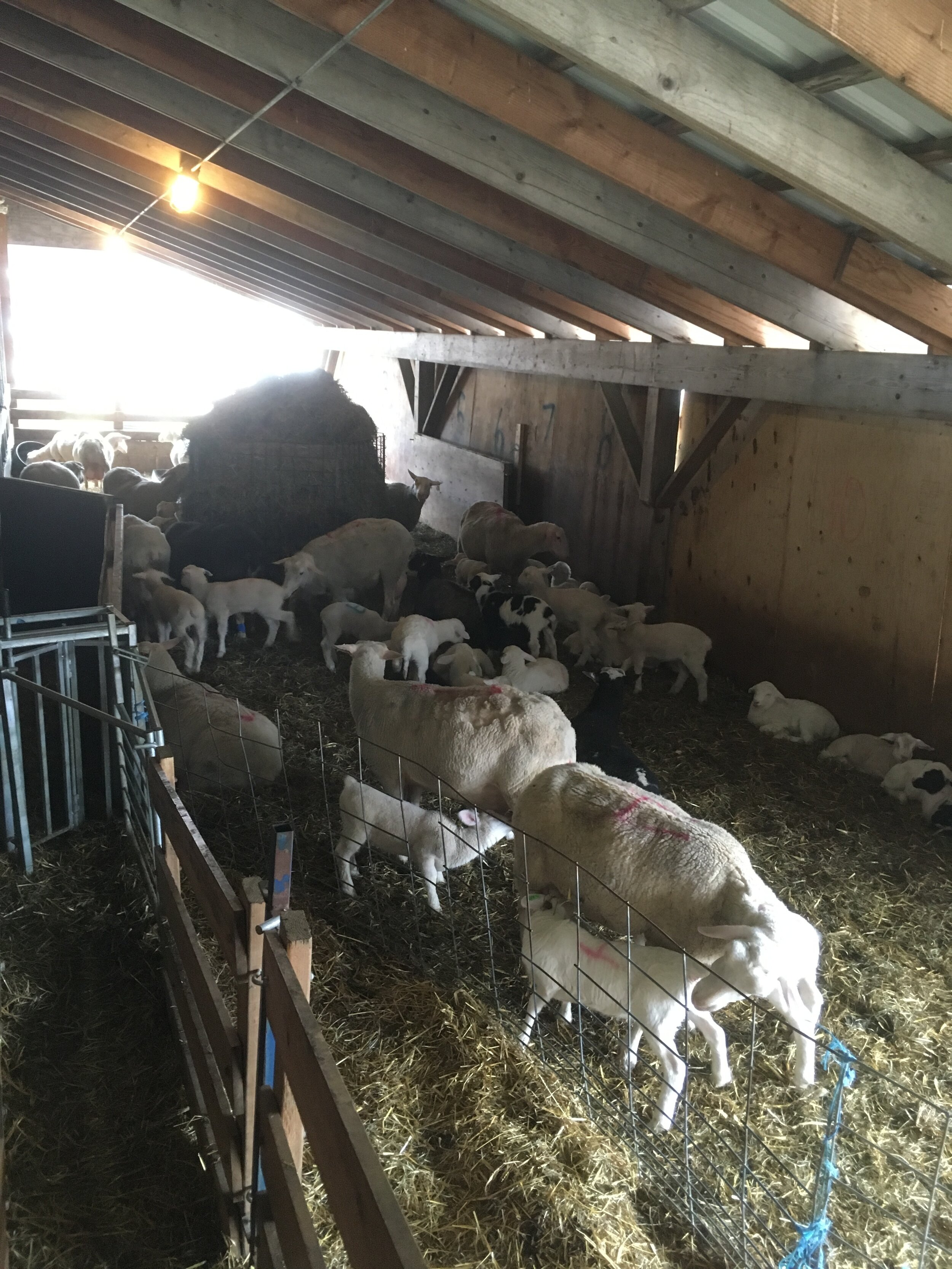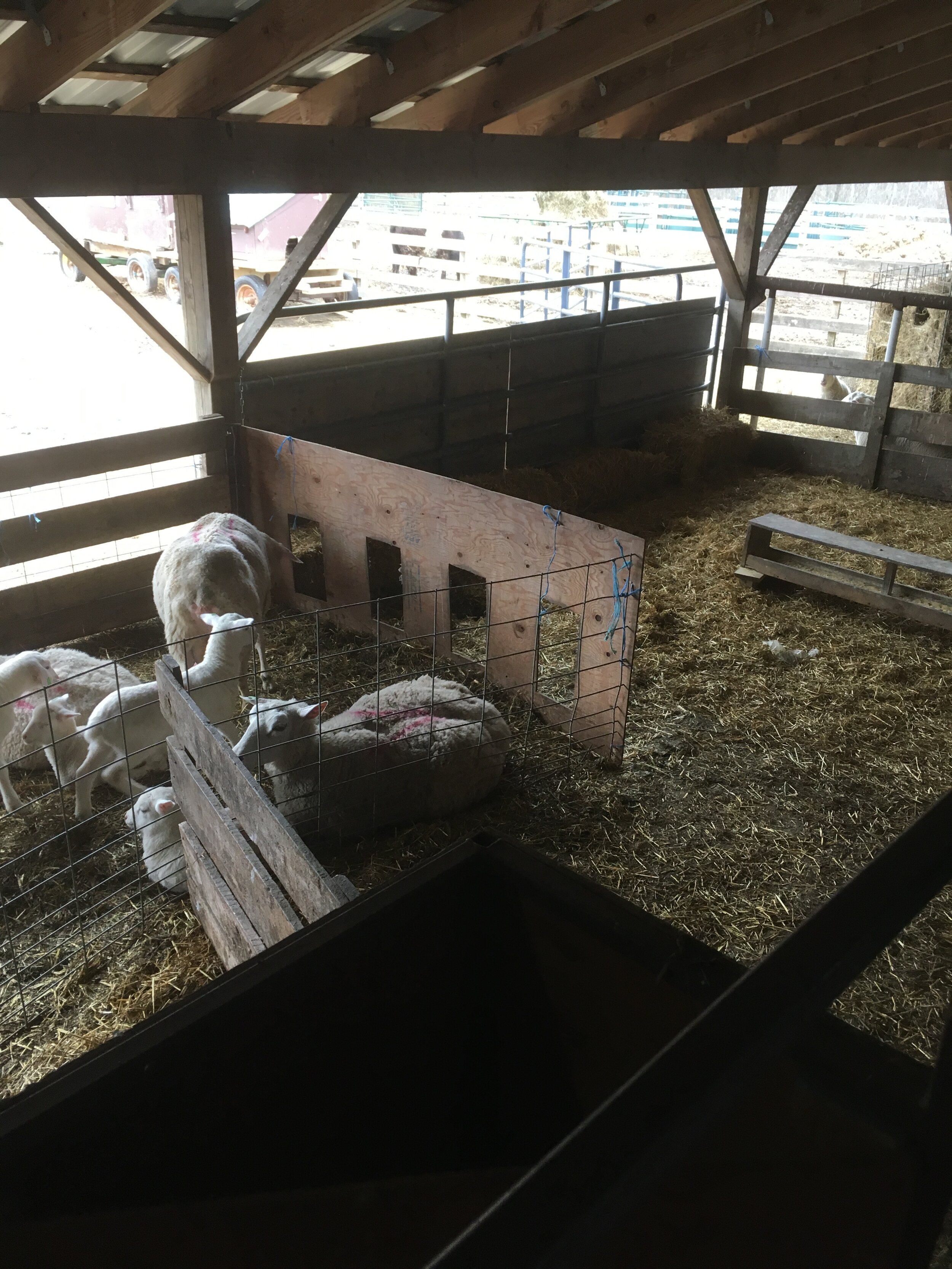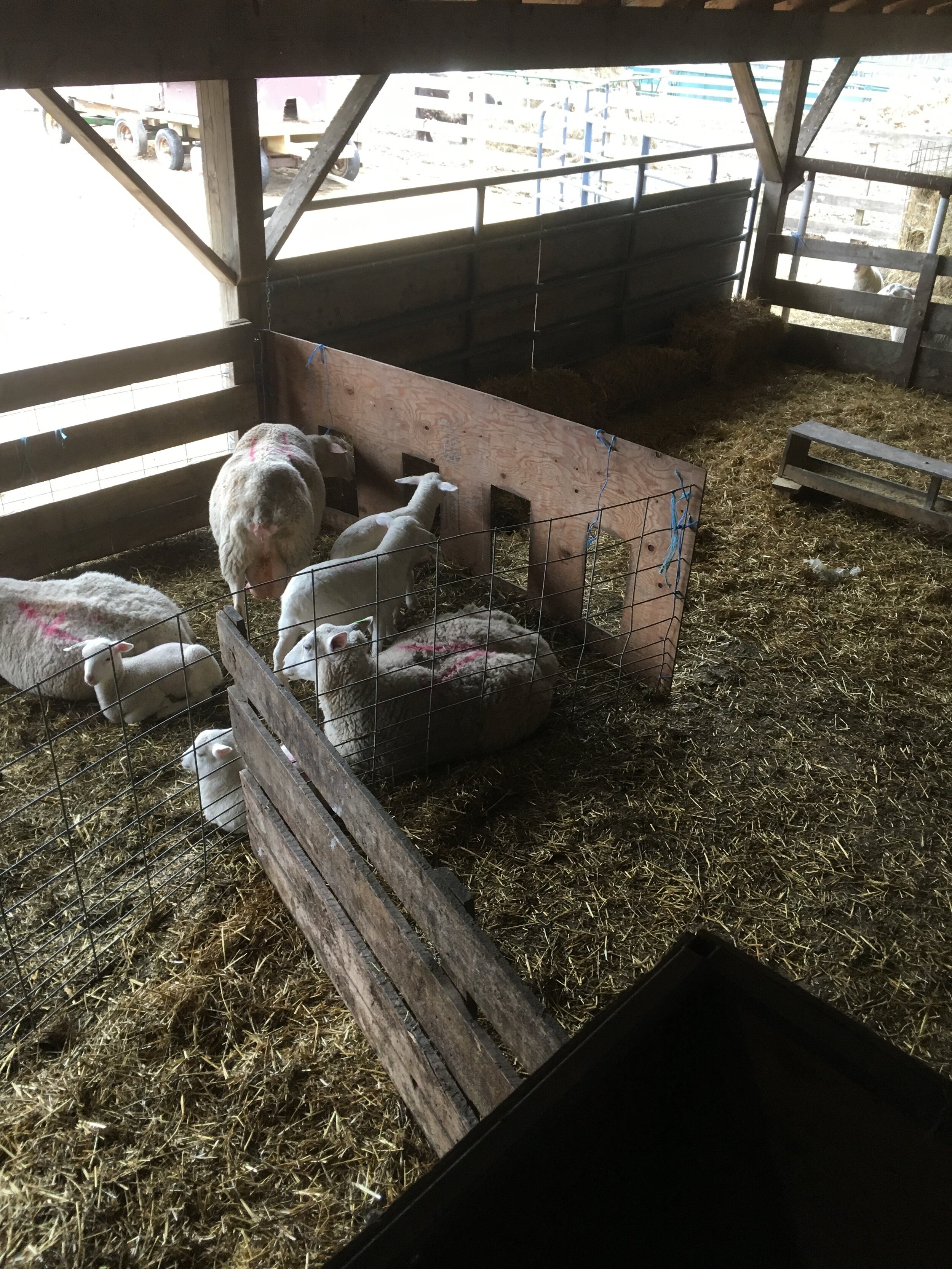The 12 hour suckling system or MIX system was first presented by the Spooner Research Station in 2002. An adapted version of the earlier system is now used at Lark’s Meadow Farms in Idaho and Meadowood Farms in New York. Please click on the farm names or scroll down to read more about how this system works on each farm and how it could work on your farm as well.
Membership in DSANA is required to view this content. Want to have a look? Join us today! Already a member? DSANA members can login below to view the 12 hour suckling system content.
Lark’s Meadow Farms
12 Hour Suckling Program
Kendall Russell and his family run Lark’s Meadow Farms in Rexburg Idaho. The farm uses a unique lamb weaning system that leaves lambs with their ewes overnight. To learn more you can click below and read the notes from the presentation Kendall made at our symposium in 2019. You can also read the story featured in our April 2020 newsletter about the system below.
The Lamb Weaning System at Lark’s Meadow Farms- PDF
The 12-hour Difference: How a unique system of rearing lambs works for one Idaho sheep dairy (and many others)
By Terry Felda
Tin Willows Sheep Dairy & Ranch
"Mental health has value on a farm.”
So says Kendall Russell of Lark’s Meadow Farms, who uses a 12-hour lamb suckling system at his dairy in eastern Idaho. It’s a system that he says has eased many burdens on his family and his business—and it has generated much attention among sheep dairies—so I decided to try it out this spring and ask Kendall a bit more about it.
In the early years of sheep dairies in the U.S., most farmers used a weaning system known as “Day 30,” in which the ewe and her lambs stay together for the first 30 days. The lambs are then weaned and the ewe is milked. The downside to this option, though, is overall reduced milk production within ewes and potential mastitis in higher performing ewes.
Some producers use an “in-between system.” Here a farmer leaves the lambs on a ewe for 30 days but milks the ewe once a day. Again, though, there is reduced milk production and it may not optimize the production of high-performance ewes.
When U.S. dairies sought to increase production, many started using the “Day 1” option. This system does produce the most amount of milk, both in the udder and for the farmer, and producers who use it state that the increased milk production covers the cost of all the lamb milk replacer.
The biggest drawback, though, is the need to artificially feed the lambs for 30 days or up to 25 pounds. The labor over this period of time, and the cost of bottle feeding lambs (which has been going up with the price of milk replacer), leads some producers to start thinking of their lambs not as an asset but a liability.
Lark’s Meadow Farms’ 12-hour suckling system effectively addresses labor, cost, and ewe optimization issues. Kendall adapted it from the “MIX” system developed at the University of Wisconsin Spooner station in the early 2000.
Here is how Kendall does it. He leaves the ewe and her new lambs in a pen with a few other new moms for the first two or three days after birth, until the colostrum is cleared out.
The ewe and her lambs are then moved to a larger area and she is milked twice a day. Her lambs still stay with her 24/7 but are briefly separated when the ewe goes onto the milking platform around Day 3 or 4. This is Kendall’s adaptation from the MIX system: briefly separating the lambs and their ewe allows the lambs to get used to their dam being absent for short periods of time but always returning; this makes the next part easier.
After a week, the lambs are separated from their moms before the evening milking and returned to them after the morning milking. At Kendall’s, the lambs’ overnight separation is not actually 12 hours but 14 hours and they spend 10 hours with their ewes during the day – a time split that Kendall says works best for his family.
During evening separation there is no line of sight between the lambs and the ewes. They can hear each other but not see each other. Kendall tries to keep them about 100 feet apart. "I've used plywood, pallets, whatever is around,” he says.
"The lambs transition really well. They have lights, creep feed, and hay from the beginning. So when I wean them at 30 days or twice their birth weight, they are going strong. I don’t have that weaning shock."
The stress on his family has now been lessened; he raises bigger, healthier lambs for market without the labor and expense of milk replacer; and he is still generating enough milk to make his signature cheeses.
I asked Kendall why he chose to refine the MIX system. He said there were several reasons. The most important was his family and the toll that the Day 1 approach was taking on them. Another reason included the escalating cost of lamb milk replacer: at about $100 a bag he said it wasn’t penciling out and there was too much clean up.
Kendall also said, "If lambs are a cash crop for you, you make more money [with the 12-hour system] because their vigor [on mother’s milk] is so much better. The milk loss is offset by the increased size of the lamb."
In applying his ideas at my place, I have to agree with Kendall. My lambs are far healthier and bigger than they were on milk replacer; they have a muscular strength that bottle-fed lambs in small pens never seem to get. And that’s important to me. My lambs are a large cash crop. I market 30 or so intact ram lambs for the ethnic market in May. These lambs will do much better than the soft, less muscular ones I've had in past years.
And weaning has been easier on my farm. The lambs are quite comfortable in their "clubhouse" and there's hardly any stress on them when separation becomes permanent. The same goes for most of the ewes.
The most critical factor in making this work, I believe, is maintaining no line of sight. Both sides do much better when they can't see each other. I followed Kendall's advice and put up line-of-sight barriers between the lambs’ new clubhouse and their moms. Kendall suggested about a 100 foot separation but I don't have that kind of space. It’s more like 30 feet and three fences.
As for catching the lambs to put them in their clubhouse, my plan was to pitch them over the fence into the clubhouse: the well practiced "grab and throw" (delicately and kindly and with love). It is humbling how fast a 2-week-old lamb can turn and run while the 50-something shepherd is still thinking about it.
But eventually, the lambs were separated, and every day it got easier and easier. And I'm sure that as I get more practiced in catching the lambs my back won't hurt and the knees will be fine. And I won't cuss. Much.
Overall, this has been the easiest, least stressful start of the milking season I’ve ever had. I'm sold on the 12-hour weaning system.
Meadowood Farms
12 Hour Suckling Program
Meadowood Farms in Cazenovia, New York adopted their 12 hour suckling system after learning about the success Lark’s Meadow Farms had had with the system in 2015. Quincy Wool Parker presented the system as part of our 2019 symposium in Idaho. To view the presentation notes please below.
Using a 12-hour Suckling System in the 1st 30 Days of Lactation
You may also view a virtual tour of the system. Please use the arrows located at the left and right of the image to move through the tour. Also don’t miss the short films about the suckling system posted below the virtual tour.
VIDEO 1
Quincy setting up to sort ewes from lambs ~ 5pm in the afternoon. First thing she does is close the creep area so that lambs will be shut in there for the night. Then you’ll see her getting all the ewes and lambs in a “holding area” so they can all be sorted. Ewes go up the ramp to be milked, lambs go to the creep area, and will be shut in after all are sorted. Note total time to set up and sort 25 ewes & 50 lambs is 5 ½ minutes. You can see that the lambs in the creep are quite relaxed about their situation.
Video 2
After separating the ewes from their lambs, Quincy moves the 12-hr-suckling ewes in to be milked.

